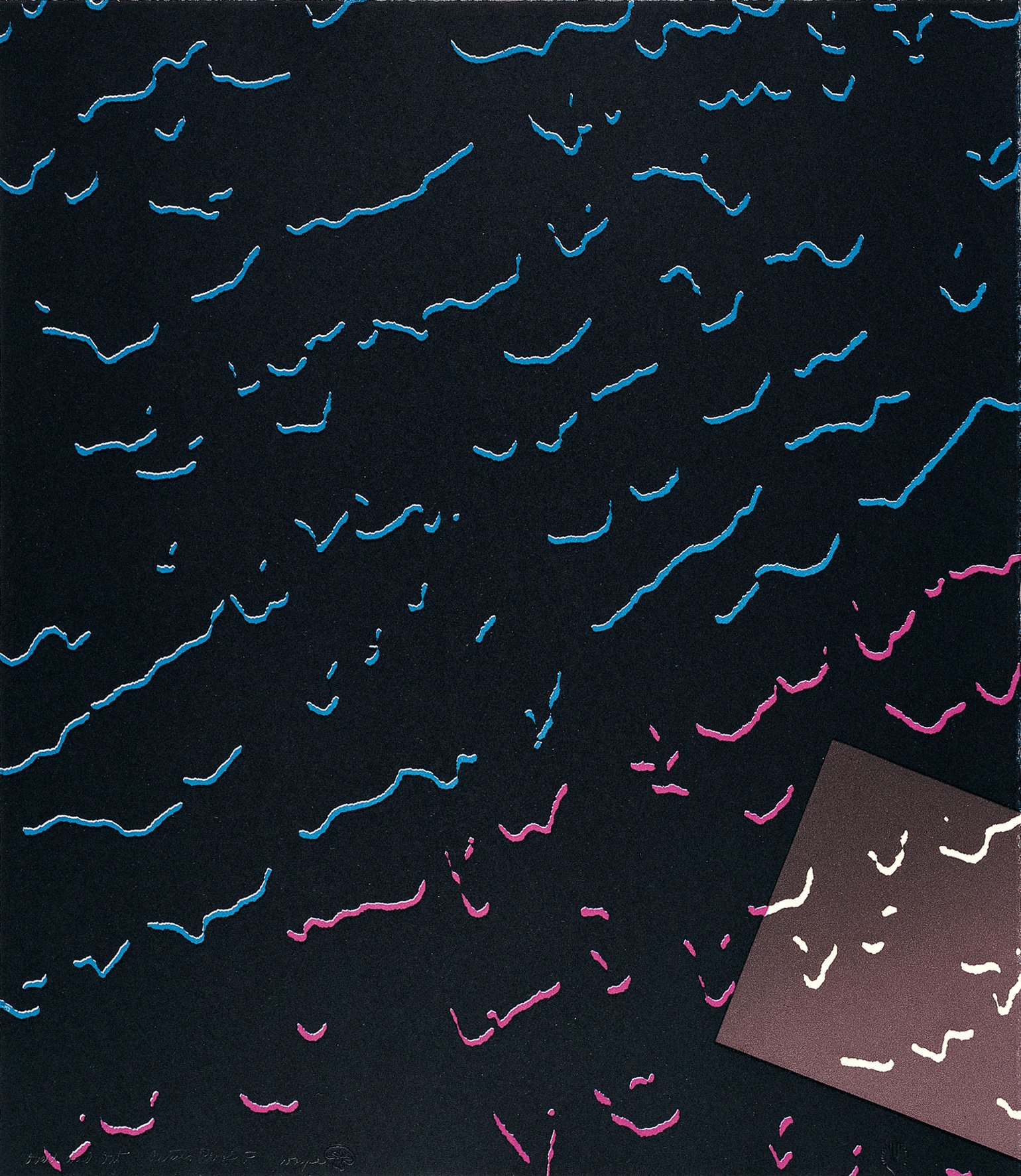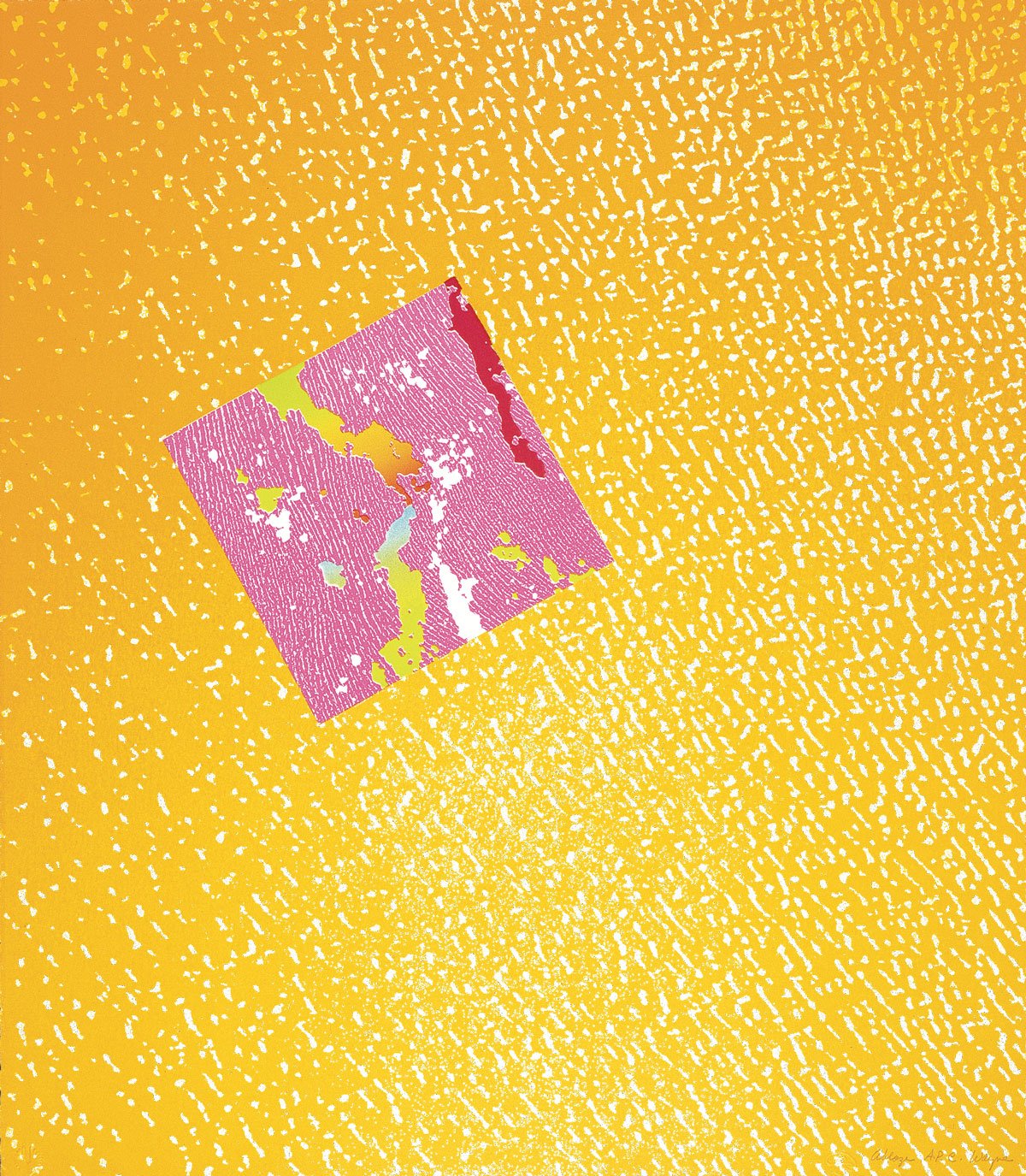JUNE WAYNE・Art & Science
The Celestial Works
Space & Time
“In her My Palomar lithographs June Wayne playfully tracked the adventures of a square through interstellar space and time.”
“Ideally placed for such a quest in California, she has been stimulated by visits to the observatory at Mount Palomar, by regularly reading the scientific literature, by discussing the latest discoveries with physicists or astronauts, and by reviewing the pixels that stream to earth from unmanned space probes.”
“The artist has always pursued a vision remarkably unaffected by fashion, or the prevailing styles. For despite the interest in the fourth dimension displayed by some twentieth-century artists, the modernist preoccupation with flatness has in many way discouraged the visual exploration of space-time, as did postwar American art, with the insistence on two-dimensional materiality. It is hardly surprising, therefore, that June Wayne has looked for inspiration not to her contemporaries, but to artists of other centuries who handled related problems. ”











